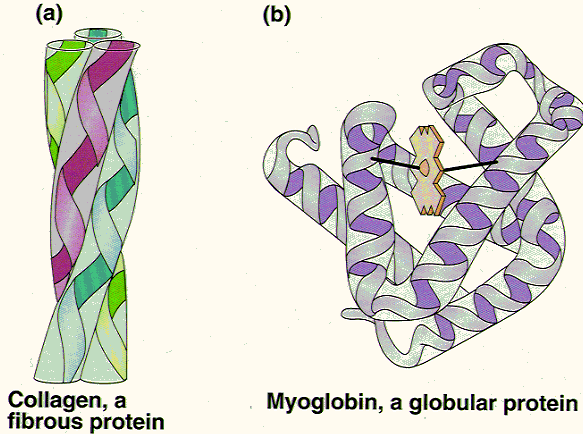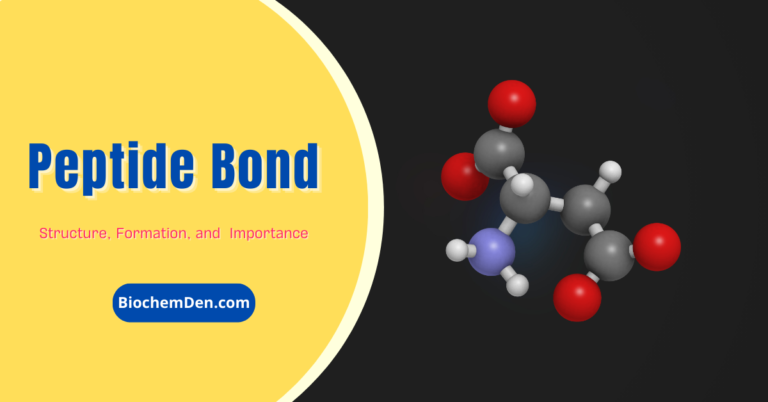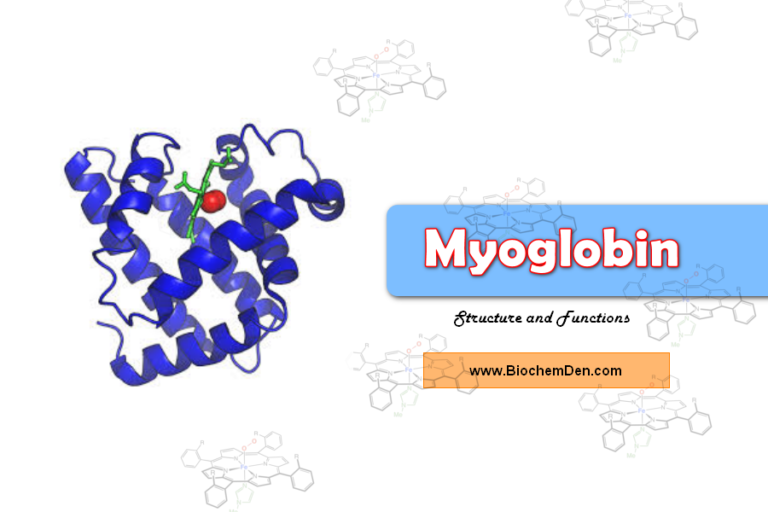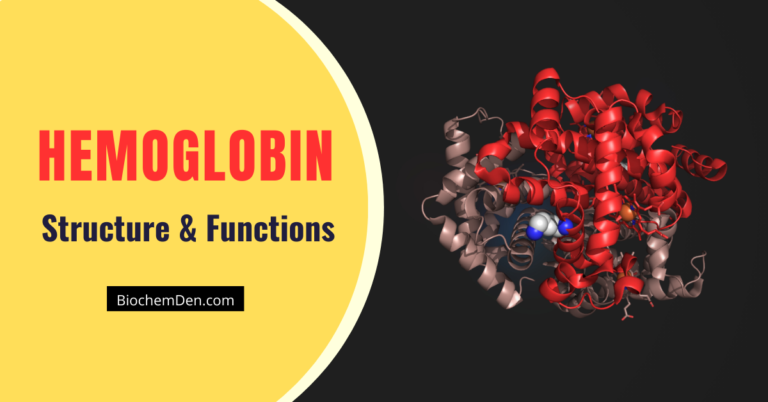Proteins are complex molecules that have diverse structures and functions inside the cells and tissues of organisms. These vital macromolecules can be classified in a variety of ways depending on their size, 3D shape, physiochemical properties, solubility, function, and location in the body. This content gives the complete information about classification of Proteins.
The proteins are the cellular macromolecules most abundant constituting 60% of the dry weight of cells.
Categorizing the range of proteins based on their attributes not only enables scientists to distinguish them but also elucidates their biological role.
Major classification methods include separation by solubility and precipitation properties, characterization by shape and size, differentiation by function, and organization based on cellular or extracellular location.
They consist of one or more polypeptide chains and has a molecular weight greater than 10,000.
They have a unique and diverse structure. The polypeptide chains fold more or less heavily on themselves inducing a large number of different three-dimensional structures.
It is this that is causing a variety of function allowing them to be responsible for thousands of reactions in a different cell. Their name “Nano-machines” cell is thus justified.
For the wide variety of cellular responses, we can easily imagine that the number of different proteins known to date is very important: 60,000.
Proteins are derived from the translation and transcription of genes, their synthesis is under genetic control.
All proteins are made up of amino acids (20 amino acids, of course on amino acids ) but they do not have of biological activity. Amino acids are the alphabet of the protein structure.
The sequence of these amino acids can be achieved by an almost infinite number of sequences to form an equally infinite number of different proteins
Classification of proteins
According to the classification of proteins, these are again classified into forms, functions, and composition.
1. Classification of proteins based on the structure
a. Fibrous Proteins
In this classification proteins, The polypeptide chains are elongated and wound about an axis in a helical shape. These are structural proteins. They can be extracellular and will then be insoluble in water and have a protective function:
- α-keratin – found in hair
- Fibroin – found in silk
- Elastin – found in skin
- Collagen – found in tendons
In more detail:
- α-keratin is a fibrous structural protein that makes up hair, nails, horns, quills, and the outer layer of skin in humans and other animals.
- Fibroin is the main protein component of silk produced by insects and spiders. It forms the filaments that make silk highly flexible and strong.
- Elastin is an extracellular structural protein found in connective tissues such as skin and blood vessels that allows tissues in these areas to resume their shape after stretching or contracting.
- Collagen is the most abundant protein in mammals, making up the organic part of bones, tendons, ligaments, and skin. It provides strength and flexibility to connective tissues.
They can also be intracellular include myosin and tropomyosin muscle cells. careful not to confuse fibrous and filamentary (globular proteins attached to each other).

b. Globular proteins
Soluble in water, they are spherical. They have much more complex than the fibrous protein structure, but they have a much greater variety of biological activities. The best example of Globular protein is MyoGlobin.
They can be membrane and then have roles as:
- Carrier: Glucose transporters (GLUT proteins) that carry glucose across the cell membrane
- Receptors – G protein-coupled receptors like the beta-adrenergic receptor that bind signaling molecules
- Ion channel – Voltage-gated sodium channels that allow the passage of Na+ ions across the membrane
- GAP links – Integrins that link the cell’s cytoskeleton structure to materials outside the cell
- Cell adhesion proteins – E-cadherin proteins that assist in sticking cells together at adherens junctions
In summary, suitable examples of membrane proteins that function as carriers, receptors, ion channels, anchors (GAP links), and cell adhesion proteins are glucose transporters, cell surface signaling receptors, sodium channels that permit ion passage, integrins that couple extracellular and intracellular structures, and cadherins that enable cell-cell junction formation. These reflect some of the major types and roles of membrane proteins.
They may be soluble and be plasma such as albumin, protein hormones such as LH, cytosolic proteins circulating proteins such as Calmodulin.
2. Classification of proteins based on function
A fundamental way of categorizing the vast number of different proteins is according to their biochemical activity or molecular purpose in the cell or organism. Functional proteins contribute in numerous physiological processes necessary for survival and propagation of the organism.
a. Structural Proteins
Structural Proteins Such proteins establish physical structures both inside the cell and throughout tissues that provide mechanical support, shape, movement capabilities, and protective barriers. Examples are:
- Collagen and elastin: extracellular structural proteins constituting connective tissue, skin, and bone
- Actin and myosin: cytoskeletal proteins facilitating muscle contraction through filament sliding
b. Cell Adhesion Proteins
This proteins facilitate communication and contact between cells through coordinated binding interactions. Cadherins, GAP junction proteins, and extracellular matrix proteins like laminin aid these cell-cell junction formations.
d. Signal Receptors Proteins
Membrane receptor proteins and intracellular steroid receptors bind signaling molecules like hormones or growth factors with specificity and sensitivity to elicit targeted cellular responses through cascading protein interaction networks or signal transduction pathways.
e. Signal Transduction Proteins
These proteins propagate and amplify external activation signals through second messenger systems or phosphorylation relays, often using enzyme cofactors like protein G proteins to transduce signals from membrane receptors.
f. Transport Proteins
Transporters like hemoglobin and transferrin bind and deliver vital nutrients like oxygen or iron through tissue fluids and blood circulation to supply systemic cellular metabolism. Their transportation role makes them oxygen carriers or metal ion carriers.
g. Immune System Proteins
Immunoglobulins function as antibodies secreted by plasma B cells. Their Y-shaped structures target and identify foreign macromolecules and pathogens for destruction as part of the humoral immune defense arsenal against disease.
h. Catalytic Enzymes
Metabolic enzymes speed up the complex biochemical reactions extracting energy from nutrients to power replication, DNA transcription, and overall cell activity and growth. Metabolic enzyme catalysis makes life possible.
So in summary, the multitude of protein types are functionally classified according to their jobs enabling structural integrity, developmental signaling, transportation networks, immune protection, or the metabolic activity underlying organism propagation and survival.
3. Classification of Proteins Based on Composition
If they are carbohydrates that are added in an amount between 5 and 40% of the molecule, the protein is called glycoproteins and glycosylated proteins. If the proportion of carbohydrates to pass more than 90% of the molecule, one blade of peptidoglycan, they have passive protection.
- There are two main types of proteins. Those containing only amino acids are holoproteins.
- Those containing a protein moiety (the apoprotein ) and a non-protein portion are hemoproteins.
- Both parts are linked in various ways: covalent bonds, ionic, hydrogen, hydrophobic. This non-protein portion may be a group prosthetic ( inducing the emergence of new biological properties setting, as heme in haemoglobin).
- The element can be added to one or more metal cofactors (Cu, Zn, …) that metalloprotein.
- A chromoprotein contains a pigment and a phosphoprotein comprises one or more inorganic phosphates.
- Also exist nucleoproteins by adding acid nucleic, and lipoproteins by addition of lipids.
4. Classification of Proteins based on solubility
The different globular proteins can be classified based on their solubility in different solvents, such as water, salt, and alcohol.
This method separates proteins based on their solubility in aqueous solutions or certain solvents. The groups include:
- Albumins – soluble in water e.g. human serum albumin
- Globulins – soluble in salt solutions e.g. immunoglobulins
- Histones – soluble in water or salt solutions e.g. histone H1
- Prolamines – soluble in alcohol solutions e.g. zein in corn
- Glutelins – soluble in acids/bases e.g. glutenin in wheat
Frequently Asked Questions (FAQs)
What are the main ways proteins are classified?
There are four major ways to classify proteins: based on composition and structure, solubility, physiological function, and localization within cells or organisms. Scientists categorize proteins based on key aspects like size, shape, chemistry, biological roles, and locations.
What are the structural classes of proteins?
The main structural groups are fibrous proteins like collagen, globular proteins like enzymes, and membrane proteins like receptors. These categories refer to shape and reflect functional differences in mechanical support, enzymatic catalysis, and cell signaling respectively.
What are some examples of functional protein groups?
Major functional groups include enzymes that use chemical catalysis for metabolism, molecular motors like myosin for movement, antibodies that recognize pathogens, transporters like channels or carriers, transcriptional regulators controlling gene expression, and structural proteins providing physical stabilization.
How can proteins be classified based on location?
Proteins can be categorized regarding cytosolic proteins residing in a cell’s interior fluid, nuclear proteins found inside the nucleus, organelle-specific proteins such as in mitochondria, membrane proteins installed in lipid bilayers, extracellular matrix proteins in connective tissues, and plasma proteins for circulation.
Why is protein classification important and useful?
Categorizing proteins in different ways reveals common features, guides experimental design in studying specific types like enzymes, supports modeling their evolution and biological development, assists bioengineering design of protein-based technology, and provides insight into health when protein functions fail.
Conclusion
Proteins are high molecular weight biological macromolecules. No in this article I provided “what is proteins and Classification of proteins”. The Classification of proteins is explained based on the structure, composition, and function. Please share this important article on What are Proteins and the classification of proteins?
Discover more from Biochemistry Den
Subscribe to get the latest posts sent to your email.






